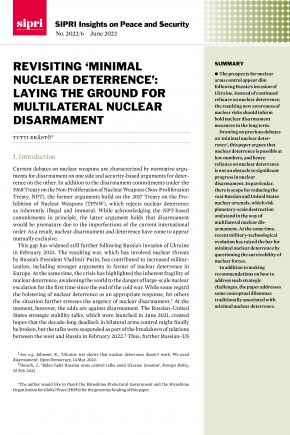Revisiting ‘Minimal Nuclear Deterrence’: Laying the Ground for Multilateral Nuclear Disarmament
The prospects for nuclear arms control appear dim following Russia’s invasion of Ukraine. Instead of continued reliance on nuclear deterrence, the resulting new awareness of nuclear risks should inform bold nuclear disarmament measures in the long term.
Drawing on previous debates on ‘minimal nuclear deterrence’, this paper argues that nuclear deterrence is possible at low numbers, and hence reliance on nuclear deterrence is not an obstacle to significant progress in nuclear disarmament. In particular, there is scope for reducing the vast Russian and United States nuclear arsenals, which risk planetary-scale destruction and stand in the way of multilateral nuclear disarmament. At the same time, recent military-technological evolution has raised the bar for minimal nuclear deterrence by questioning the survivability of nuclear forces.
In addition to making recommendations on how to address such strategic challenges, the paper addresses some conceptual dilemmas traditionally associated with minimal nuclear deterrence.
I. Introduction
II. Revisiting the theory of minimal nuclear deterrence
III. Challenges for nuclear minimalism in practice
IV. Ways forward
V. Conclusions

